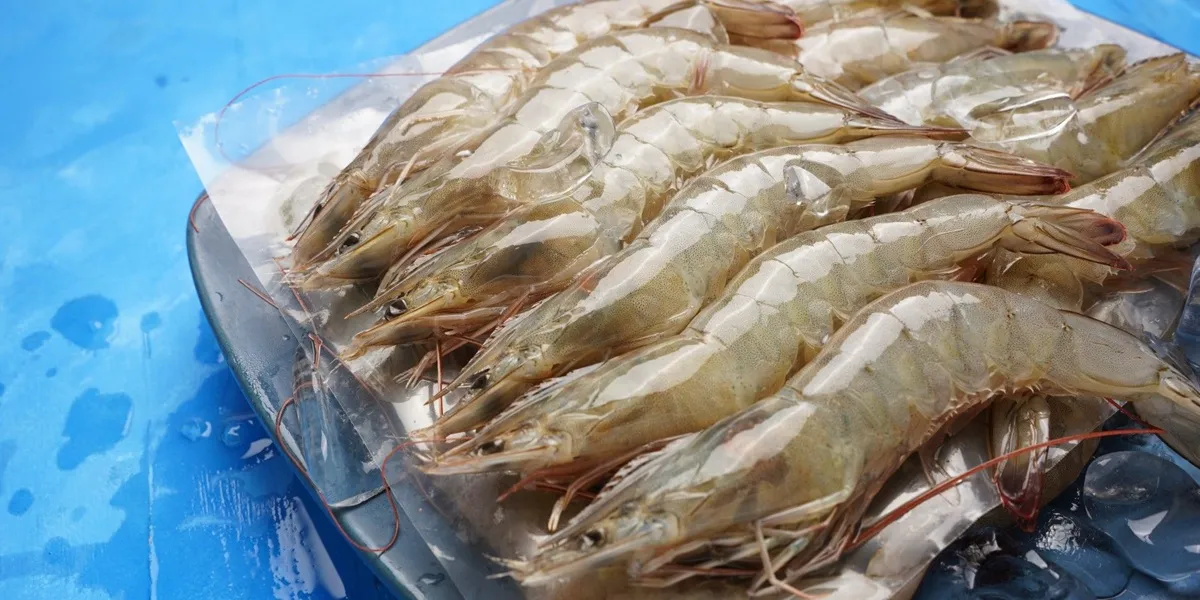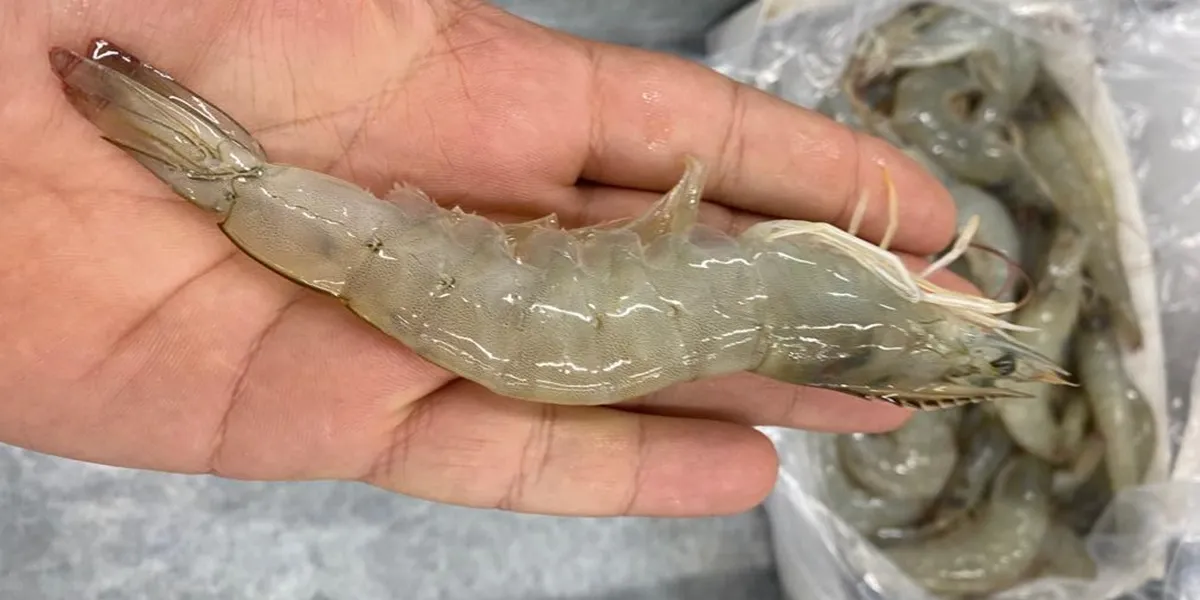Shrimp has become one of the most traded seafood commodities worldwide, fueling economic growth in coastal and aquaculture regions. The shrimp export industry has expanded rapidly due to rising consumer demand, improvements in aquaculture technology, and efficient global supply chains. Countries such as Thailand, India, Ecuador, and Vietnam are leading exporters, offering a variety of shrimp products to markets in North America, Europe, and Asia.
The global popularity of shrimp stems not only from its taste and versatility but also from its nutritional value, making it a staple in both casual dining and gourmet cuisine. Rising awareness of seafood as a healthy protein source has further accelerated trade, creating new opportunities for producers and exporters worldwide.
Global Shrimp Export Market Overview
The international shrimp market has witnessed consistent growth over the past decade, with export volumes increasing in response to global demand.
| Top Exporting Country | Major Shrimp Types | Annual Export Volume (tons) | Major Markets |
|---|---|---|---|
| Thailand | Whiteleg shrimp, Tiger shrimp | 400,000+ | USA, Japan, EU |
| India | Black tiger shrimp, Whiteleg shrimp | 350,000+ | USA, Middle East, EU |
| Ecuador | Pacific white shrimp | 300,000+ | USA, China, EU |
| Vietnam | Whiteleg shrimp | 250,000+ | Japan, EU, Korea |
As this table shows, Asia and South America dominate shrimp exports, benefiting both local economies and international consumers. Exporters are increasingly investing in aquaculture technology, cold-chain logistics, and sustainable farming methods to maintain quality and meet regulatory standards.
Factors Driving the Shrimp Export Boom
Several interrelated factors contribute to the rapid growth of shrimp exports:
a. Rising Global Seafood Consumption
Consumers worldwide are seeking healthier protein alternatives, and shrimp is perceived as low-fat, high-protein, and rich in essential nutrients. This demand is particularly strong in North America, Europe, and emerging Asian markets.
b. Technological Advancements in Aquaculture
Modern aquaculture methods—such as biofloc technology, recirculating aquaculture systems (RAS), and automated feeding—have improved yields, reduced mortality rates, and lowered production costs.
c. Trade Agreements and Market Access
International trade agreements and streamlined customs regulations have facilitated smoother cross-border transactions, allowing exporters to reach high-demand regions efficiently.
d. Improved Supply Chain Infrastructure
Cold storage, freezing technology, and optimized shipping routes ensure that shrimp retains freshness and quality, even during long-distance export.
e. Premium and Sustainable Branding
Producers increasingly emphasize sustainable practices, traceability, and certifications, appealing to environmentally conscious consumers in developed markets.
Economic Impact on Local Communities
The shrimp export industry has significant socio-economic benefits for coastal regions where aquaculture thrives.
Key Benefits:
- Employment Opportunities: Farms, processing plants, and transportation networks create thousands of jobs.
- Income Generation: Shrimp farming provides a stable income for small-scale farmers and rural communities.
- Infrastructure Development: Roads, cold storage, and port facilities improve as trade grows.
- Skill Development: Training in aquaculture techniques and quality control enhances human capital.
- Women’s Participation: In some regions, women contribute to processing, packaging, and quality inspection, promoting gender inclusion.
By supporting local livelihoods, the shrimp export industry contributes to poverty reduction and economic development in coastal areas.

Types of Shrimp and Market Preferences
Different shrimp varieties cater to specific consumer preferences and market requirements.
Commonly Exported Shrimp Types:
- Whiteleg Shrimp (Litopenaeus vannamei): Popular in North America and Europe due to mild flavor and large size.
- Tiger Shrimp (Penaeus monodon): Highly prized in Asian and European markets for its firm texture.
- Black Tiger Shrimp: Known for its bold taste and high yield in aquaculture systems.
- Pacific White Shrimp: Exported primarily from South America to the USA and Asia.
Understanding consumer demand for size, taste, and presentation helps exporters optimize production and pricing strategies.
Navigating Shrimp Export Challenges
Despite strong demand, the shrimp export industry faces several obstacles:
Challenges:
- Disease Management: Shrimp farms are susceptible to viral outbreaks, such as Early Mortality Syndrome (EMS).
- Environmental Concerns: Intensive aquaculture can impact mangroves, water quality, and biodiversity.
- Regulatory Compliance: Importing countries enforce strict food safety, traceability, and quality standards.
- Market Competition: Multiple exporters compete on price, quality, and branding.
- Climate Variability: Extreme weather events can affect shrimp production and logistics.
Opportunities:
- Sustainable Aquaculture Certification: Enhances market access and appeals to environmentally conscious buyers.
- Value-Added Products: Ready-to-cook, peeled, or seasoned shrimp attract premium markets.
- Technological Integration: Using IoT, drones, and remote sensors improves farm management and supply chain efficiency.
- Emerging Markets: Expanding exports to China, South Korea, and the Middle East diversifies revenue streams.
Proactively addressing these challenges strengthens the resilience and competitiveness of shrimp exporters.
The Role of Sustainability
Sustainability is a central consideration for exporters and consumers alike.
Sustainable Practices in Shrimp Farming:
- Eco-Friendly Feed: Using sustainable and low-impact feed reduces environmental pressure.
- Water Recirculation Systems: Minimizes water consumption and maintains water quality.
- Waste Management: Converting waste into biogas or compost reduces environmental footprint.
- Mangrove Preservation: Integrating shrimp farms with mangrove protection supports biodiversity.
Sustainability not only satisfies regulatory and consumer demands but also ensures long-term viability of shrimp farming.
Learn more: Iranian date varieties
Technological Innovations Supporting Shrimp Exports
Modern technology drives efficiency and quality in shrimp exports:
- Biofloc Technology: Enhances water quality and reduces feed costs.
- Automated Feeding Systems: Ensures consistent nutrition and growth rates.
- Cold Chain Logistics: Maintains freshness during international shipping.
- Blockchain Traceability: Guarantees product authenticity and quality for end consumers.
- Digital Market Platforms: Allow exporters to connect directly with retailers and buyers globally.
Technology adoption reduces losses, improves quality, and strengthens global competitiveness.
Marketing Strategies and Consumer Awareness
Exporters leverage marketing to increase shrimp demand and brand recognition:
- Highlighting health attributes, such as high protein, low fat, and omega-3 content.
- Packaging shrimp in convenient, ready-to-cook formats for busy consumers.
- Educating consumers on sustainability and certifications to differentiate products.
- Participating in international seafood exhibitions to build trade relationships.
For instance, just as date exporters emphasize the health benefits of dates and unique Iranian date varieties to global consumers, shrimp exporters promote quality, freshness, and sustainable farming credentials to capture attention in competitive markets.
Financial Considerations for Exporters
Economic planning is crucial for a successful shrimp export operation:
- Cost Management: Includes feed, labor, packaging, transportation, and certification costs.
- Currency Fluctuations: Exchange rate volatility affects profitability in international markets.
- Insurance: Protects shipments against spoilage, damage, or delays.
- Trade Agreements: Leveraging free trade agreements can reduce tariffs and enhance competitiveness.
Careful financial strategies help exporters maximize profit while mitigating risk.
Regional Case Studies
Thailand
- Thailand is a leading global shrimp exporter, with advanced aquaculture practices and efficient supply chains.
- Focus on Tiger shrimp and Whiteleg shrimp for premium markets.
India
- India’s shrimp export industry supports thousands of small-scale farmers.
- Investment in biosecurity and disease management strengthens production.
Ecuador
- Pacific white shrimp dominates exports to the USA and China.
- Innovative cold-chain logistics maintain product quality during transport.
These case studies illustrate how strategic production, technology adoption, and global market access drive export success.
Read more: Iranian dates vs Medjool dates
Emerging Trends in Global Shrimp Markets
The shrimp export industry is evolving in response to consumer preferences and market dynamics:
- Premiumization: Higher demand for large, high-quality shrimp varieties.
- Health and Wellness Trends: Consumers seek low-fat, high-protein seafood options.
- E-commerce and Direct-to-Consumer Sales: Online platforms expand reach.
- Sustainability and Traceability: Certifications and eco-friendly practices become essential.
- Diversified Products: Ready-to-eat, frozen, and seasoned shrimp cater to modern lifestyles.
Adapting to these trends ensures continued growth and market relevance.
Future Outlook
The outlook for shrimp export is highly promising. Growth is fueled by technological innovation, increasing global seafood consumption, and expanding markets in emerging economies. Exporters who prioritize quality, sustainability, and efficient logistics are best positioned to capture market share and drive economic benefits in their home countries.
In addition, learning from other export-driven industries, such as date exports where producers highlight Iranian Dates and unique varieties, shrimp exporters can enhance branding and market differentiation to reach premium and health-conscious consumers.
Conclusion
The boom in shrimp exports reflects a combination of global demand, technological advancements, and strategic marketing. By overcoming challenges such as disease management, environmental concerns, and regulatory compliance, exporters create economic opportunities for local communities while providing high-quality seafood to consumers worldwide.
From supporting rural livelihoods and creating jobs to promoting sustainable aquaculture practices, the shrimp export industry is a key driver of economic growth. Strategic investments in technology, branding, and sustainability ensure that the global shrimp market continues to flourish, benefiting both producers and consumers in the years to come.




